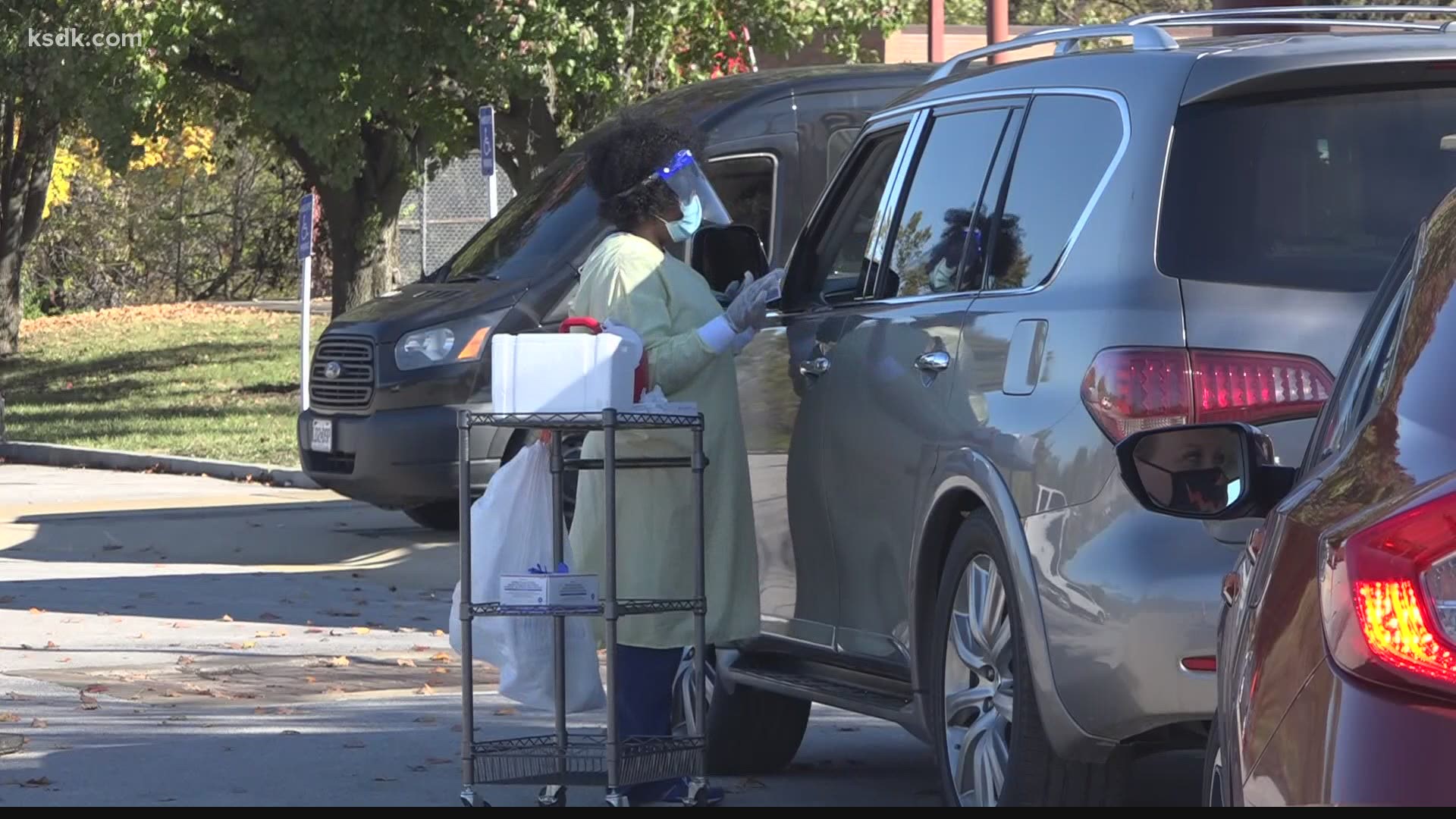ST. LOUIS COUNTY, Mo. — About five out of every 100 adults in St. Louis County has been infected with COVID-19 and the number could be even higher as cases increase, according to a study by the health department.
The same study found Black residents were more than twice as likely to have had the virus compared to white residents -- with 8.3% of Black residents testing positive and 3.45% of white residents testing positive. The tests were conducted either through a nasal swab or antibody test. This disparity also is apparent in higher COVID-19 death rates among Black residents than white residents.
“This survey gives us critical information for understanding the impact of COVID-19 in the community and making decisions on how to shape our response to best help our residents,” St. Louis County Executive Sam Page said.
St. Louis County has directed CARES Act Healthcare Response funding specifically to the hardest-hit communities, mostly in north St. Louis County.
The study measured active COVID-19 infection based on nasal swab tests; past infections were determined by antibody/blood tests, according to a press release from the health department. Over the course of the testing period, from mid-August through mid-October, about 1.2% of adult residents – about 9,500 -- had an active COVID-19 infection at any given point. About 5% of adult residents -- or about 39,000 -- had COVID-19 antibodies, which indicated a past infection.
The St. Louis County Department of Public Health commissioned the survey, which was conducted by the Institute of Public Health at Washington University.
“With so many people actively infected with COVID-19 earlier this fall – and contagious – we’re already seeing that the illness can spread quickly to even larger portions of the population,” said Dr. Elvin Geng, a professor in the Division of Infectious Diseases at Washington University School of Medicine
The survey indicates that about 95% of St. Louis County’s 1 million adults and children were still susceptible to the virus in mid-October.
“The relatively small proportion of the population that had evidence of previous infection via antibody testing means that the size of the current surge we are experiencing in the region could be quite dramatic,” Geng said. “Under these conditions, we are already seeing a steep rise in cases that has the potential to overwhelm area hospitals.”
The St. Louis Metropolitan Pandemic Task Force has been warning that hospital capacity will reach its limit if the cases continue to rise. As of Sunday, hospitals reported 80% capacity of staffed hospital beds and 87% capacity of ICUs.
Watch the county executive's Monday morning press conference in the video player below.
About the study methodology
WashU's Institute for Public Health teamed with other local public health and health-care providers to conduct a phone survey of a representative sample of St. Louis County residents, the release said. Participants were offered free COVID-19 testing at convenient locations across the county, regardless of whether they had symptoms.
Study participants could choose to receive diagnostic testing to detect active COVID-19 infection or antibody testing to detect a previous infection. Transportation to and from testing sites was provided free of charge to those who needed it.
During the study, more than 1,300 St. Louis County residents received a diagnostic test (performed with a nasal swab) and/or an antibody test (blood test).
More than 3,300 residents completed questionnaires to gauge how the pandemic had affected their lives. While detailed results of the questionnaire are forthcoming, initial analyses show that a quarter of those surveyed had experienced wage reduction or job loss due to COVID-19.
The St. Louis County Department of Public Health allocated $1.99 million of federal CARES Act funding to pay for the survey. The department said it will use the data and results to help inform decisions about public health and healthcare delivery during the pandemic and possible future public health emergencies.
WashU managed the project and coordinated data flow and analysis. BJC HealthCare, SSM Health, Mercy and the St. Louis County Department of Public Health helped with the testing. The University of Missouri helped design and conduct the survey and the St. Louis Integrated Health Network provided consultation to the team related to community engagement and assisted in the delivery of follow-up services.

